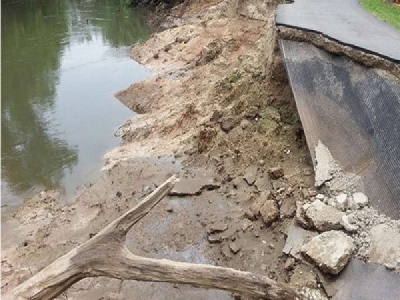
Posted on May 23, 2017
By Mihir Zaveri, Houston Chronicle
A new plan is in the works to control floodwaters threatening to inundate the fast-growing neighborhoods upstream of the Addicks and Barker reservoirs, the U.S. Army Corps of Engineers said Thursday.
Army Corps officials said they would seek to study the Addicks and Barker dams, built six decades ago, and see what improvements could boost the aging structures’ ability to handle large volumes of water. In the aftermath of devastating storms last spring, floodwaters pooled behind the reservoirs and inundated one of the most rapidly developing parts of the Houston region.
The areas upstream of the dam along the Grand Parkway near Katy and Cypress have seen tremendous growth in recent years, and hundreds of thousands more people are expected to arrive in the coming decades. The improvements could include ways to balance water between the dams or find new ways to channel water out of the dams to prevent flooding, Army Corps officials said Thursday.
“We can’t wait for the next disaster; we better get ahead of it,” Lt. General Todd Semonite, the commanding general and chief of engineers for the U.S. Army Corps said in an interview.
Army Corps officials made the announcement Thursday during a visit by Semonite to its Galveston facility. The study would cost about $3 million, take three years and start after the federal budget is finalized.
The plan comes as the Corps, like many federal agencies, faces budget uncertainty. Some fear cuts may curtail the Corps’ ability to pursue big infrastructure projects like those planned to retrofit Houston’s waterways. Currently, the Army Corps has six major flood reduction projects on Houston’s bayous, which are conducted in tandem with the Harris County Flood Control District, including the massive retrofit of Brays Bayou in southwest Houston.
President Donald Trump’s preliminary budget plan released early this year showed a $1 billion, or more than 16 percent, cut to the corps, prompting some concern across the country that their projects could be curtailed.
“That cut is a non-starter,” said U.S. Rep. Sheila Jackson Lee, a Houston Democrat who is a member of the House Budget Committee. “There are so many projects that we are engaged in and need to commit to and continue.”
Semonite said while he does not know how the final budget for the next year will shape up, he expects funding levels to be stable. He said Congress could also step in with additional funds beyond the adopted budget.
“I think the short answer is I’m not laying awake worrying about it,” Semonite said. “Congress is going to do the right thing. We’re going to figure out how to put the money in the right place.”
The Addicks and Barker dams were built at the upper end of Buffalo Bayou in response to devastating floods in 1929 and 1935. They had a long history of seepage and erosion. When the Corps evaluated their condition in 2007, many aspects of the dams, including the embankments, the conduits and the water control structures, were found “probably inadequate” for an extreme storm, according to inspection reports.
Two years later, Addicks and Barker were given the Corps’ worst safety classification.
In response, the Corps has begun a $73 million retrofitting project. That is about 15 percent done, said Lars be Zetterstrom, the commander of the corps’ Galveston District, and is slated to be completed in February 2020.
That project is designed to keep neighborhoods downstream of the dams safe from floodwaters, including downtown Houston and the Texas Medical Center.
“If you talk about consequences, you’re talking about 1.2 million citizens of Houston downstream of Addicks and Barker Dam and estimates of about $60 billion worth of damages that could be caused with a failure,” Zetterstorm said.
If the dams failed, half of Houston would be underwater. Under the worst scenario at Addicks, property damage could reach $22.7 billion and 6,928 people could die.
But last spring’s storms revealed the extent of another problem: protecting homes and people upstream of the dams. Days after the Tax Day Flood, on April 23, 2016, the water reached 102.65 feet above sea level at Addicks, a record. Two days later, at Barker, the water level hit 95.24 feet, another record. Together, at their peak pools, the reservoirs stored 6.8 billion gallons, enough to fill NRG Stadium 101 times over.
Source: Houston Chronicle





